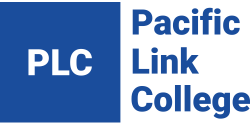ITEC110
Information Systems Course
Quick Links
Course Overview
This course introduces students to the concepts of information systems, their use in business, and the larger impact they are having on our world. Participants will explore the fundamentals of IS, including hardware, software, databases, networks, and their integration to support business processes and decision-making. Through theoretical concepts, practical examples, and case studies, participants will develop an understanding of how Information Systems (IS) can enhance organizational efficiency, effectiveness, and competitiveness.
Upon completion of this course, participants will have the ability to analyze organizational information needs, design Information Systems (IS) solutions, and evaluate their impact on business performance. They will understand the strategic importance of IS in modern organizations and be equipped with the knowledge and skills to contribute to IS planning, implementation, and management.
Prerequisites
No prerequisite to this course.
Course Details
- Understanding Information Systems
- Infrastructure and Technology Components
- Data and Databases
- Information Systems Security
- Networking and Communication
- Enterprise Resource Planning Systems (ERP)
- Business Processes
- People in Information Systems
- Information Systems Development
- Globalization and Digital Divide
Learning Outcomes
Upon successful completion of the course, students will be able to;
- Discuss an overview of information systems, including the history of how we got where we are today.
- Describe information systems hardware and how it works, as well as different computer parts and how they interact.
- Discuss software and the role it plays in an organization.
- Explore how organizations use information systems to turn data into information that can then be used for competitive advantage, particularly the role of databases.
- Describe the history of networking, how the Internet works, and the use of networks in organizations today.
- Discuss the information security triad of confidentiality, integrity, and availability, including different security technologies and maintaining personal information security.
- Explain the impact that information systems have on organizations and whether IT can give a company a competitive advantage.
- Discuss business process management, business process reengineering, and ERP systems.
- Identify the different types of people involved in information systems, from those who create information systems, those who operate and administer them, those who manage them, and those who use information systems.
- Describe how information systems are created by explaining the concept of programming, listing different methods of software development, discussing website and mobile application development, end-user computing, and the ‘build vs. buy decision that many companies face.
- Discuss the impact that the Internet is having on the globalisation of business and the issues that firms must face because of it, such as the concept of the digital divide and some of the steps being taken to alleviate it.
- Distinguish and discuss the effects of IT having brought a broad array of new capabilities and powers to governments, organisations, and individuals, and the legal and regulatory changes that have been put in place in response.
- Present some of the new technologies, from wearable technology to 3D printing, and describe how they will enhance living standards, improve economical efficiency, and advance other fields, from health care to communication.
Learning Methods
- Lecture/presentation
- Discussions
- Individual assignments and group exercises/case studies
- Facilitated group work
- Online activity


